Week 3: Italian Early Renaissance Art
1/31
There's no tags or description
Looks like no tags are added yet.
Name | Mastery | Learn | Test | Matching | Spaced |
|---|
No study sessions yet.
32 Terms
Altarpiece:
a panel that is painted or sculpted representing a religioys subject that is placed above and behind an altar in a church
Two panels = diptych
Three panels = triptych
Multiple panels = polyptych
Chiaroscuro:
literally translated as “light-dark”
The use of light and dark to produce three-dimensional modeling
Foreshortening:
the use of perspective to show the extension of an object back into space
Fresco:
Italian for “fresh”
A mural-painting technique involving the application of permanent lime- proof pigments, diluted in water, on freshly laid lime plaster
(Buon fresco involves the application of pigment on several layers of wet plaster, while fresco secco refers to the painting directly on dried lime plaster
Gilding:
Very thin bounded gold leaf applied with glue to a surface
Emphasizes the spiritual and heavenly subject matter of religious works
Giornata (pl. gionate):
meaning “day” in Italian, the section of plaster that a fresco painter expects to complete in one session, to keep the plaster from drying before pigment can be added
Italo- Byzantine Style (the maniera greca):
the use of the Byzantine style in Italy, especially prevalent after the fall of Constantinople in 1204, which led to the migration of Byzantine artist to Italy
Maesta:
the scene of the Virgin Mary (Madonna) seated on a throne holding the infant Jesus on her lap
often flanked by angels, saints or prophets
translated “majesty”
Tempera:
a paint made of pigment mixed with egg yolk, glue or casein
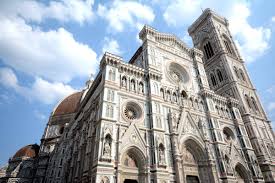
Florence Cathedral (Santa Maria del Flore)
Florence, Italy
c. 1296
Romanesque
geometric
Cathedral and city hall of Florence by same architect, Arnolfo di Cambio
Shows competition Florence felt with Siena
Ornamented in Tuscan style-marble geometric designs
Emphasis on horizontal elements
Campanile (bell tower) separate structure, designed by Giotto
hosted 30,000 while Florence only had 10,000 population at the time
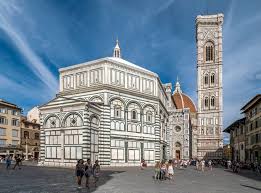
The Baptistry of St. John
c. 1059 - 1128
Romanesque
All Florentines baptized here in early years after its completion
Baptism as cleasing the soul
Classical details: triangular pediments, Corinthian capitals
baby’s were baptized here
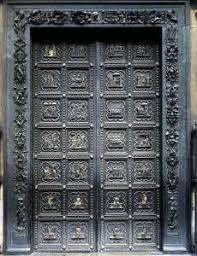
South doors Baptistry of San Giovanni, Cathedral of Florence
c. 1330 - 1336
Andrea Pisano
Guilt bronze
Each square on the door tells a different Bible story
Compositions of each panel recall those of Giotto
Proportions, flowing robes recall French sculptural style
French Gothic quatrefoil frames
There was a contest between two artist: Filippo Brunelleschi and Lorenzo Ghiberti, Lorenzo won.
Brunelleschi stopped sculpting after losing and only was an architect
Lorenzo won at 20 years old and took him 20 years finish the entire door
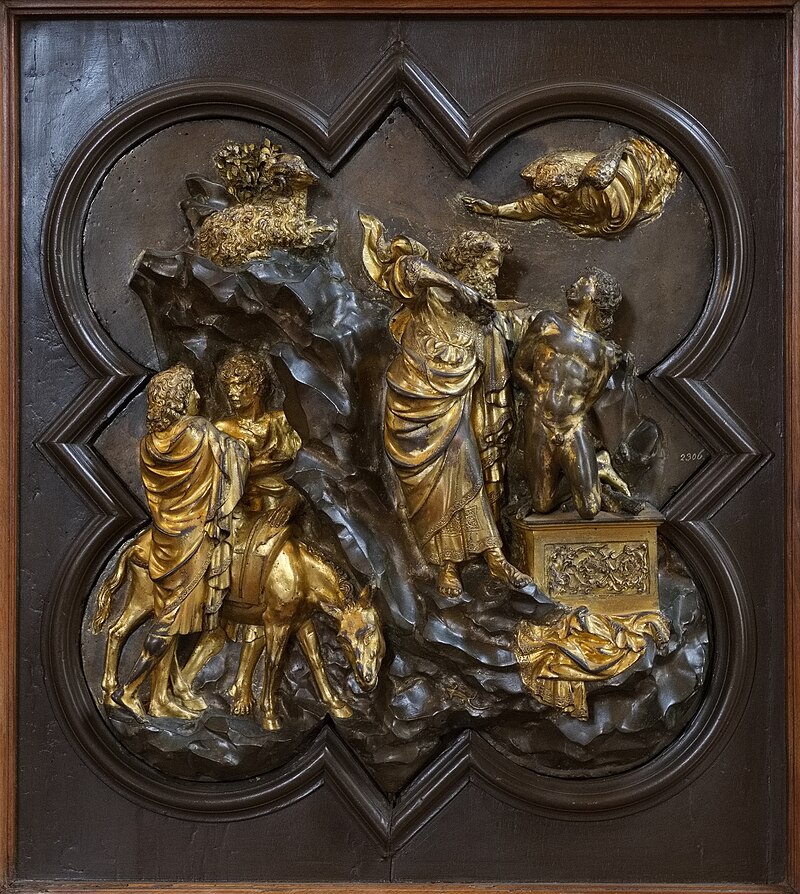
Sacrifice of Isaac:
Lorenzo Ghiberti
Florence Baptistery
c. 1401 - 1402
gilded bronze
Lorenzo wins the contest
His art labeled as more aesthetically pleasing
recalls classical antiquity
emotive
naturalistic detail
diagonal
Unified composition
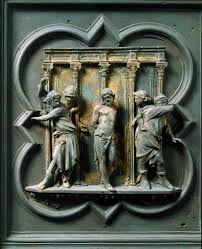
The Flagellation of Christ
Lorenzo Ghiberti
c. 1401 -1424
Gilded Bronze
Baptistry Florence
North doors
Scenes from the New Testament (Life of Christ)
Took 20 years to complete
Artist signature —appears as a prophet
Contrapposto:
posture of a figure standing at rest with weight shifted onto one leg
contrapposto became popular again
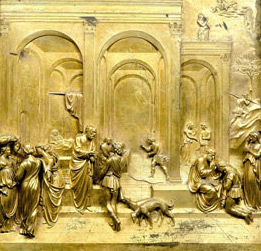
Gates of Paradise:
Lorenzo Ghiberti
east doors
Florence baptistery
c. 1425 - 52
Gilded bronze
Baptistry, Florence
Lack of quatrefoil frames
Old Testament scenes
Use of perspective
Artist’s signature-appears as a prophet
Gothic architecture to signify the old
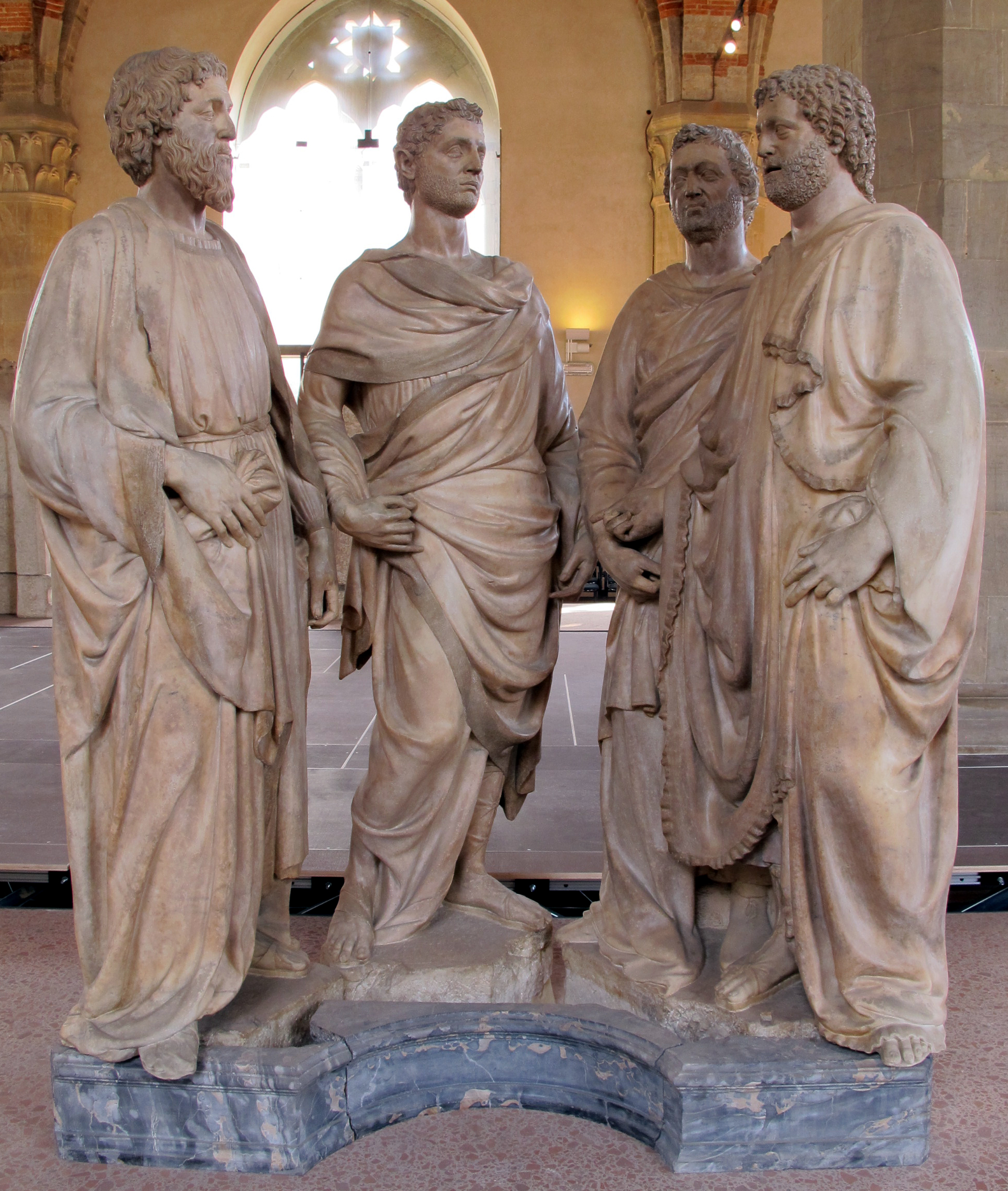
Four Martyred Saints (Quattro Santi Coronati):
Nanni di Banco
Church of Or San Michele
Florence, Italy
c. 1408 - 1414
Marble figures
Each niche of Or San Michele is decorated with sculpture paid for by a guild
Predella: shows woodworkers and stonemasons at work
4 different ppl: Four-Crowned Martyrs, or Four Crowned
these 4 ppl refused to make sculptures of pagan gods and they were killed
Contrapposto
shows the body underneath the clothes
hair and face are detailed Contrapposto
Stonemasons guild:
guidl was collective for a skilled occupation
commisioned stonemasons at work
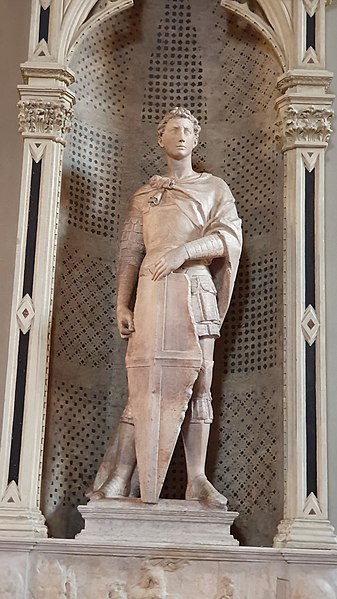
St. George:
Donatello
c. 1415 - 1417
Florence, Italy
he was a knight
fought on horseback
weapons guild requested it
fought dragon (shown on the bottom)
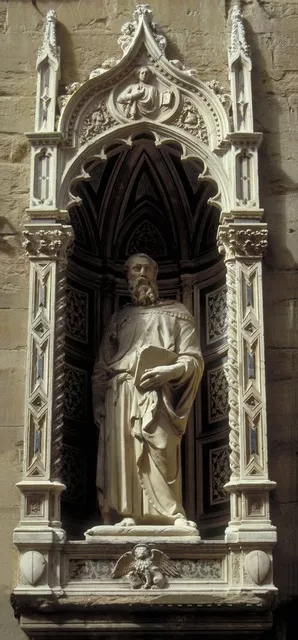
St. Mark:
Donatello
Florence, Italy
c. 1411 - 1413
standing on a pillow
attention to clothes
commissioned by the clothing guild
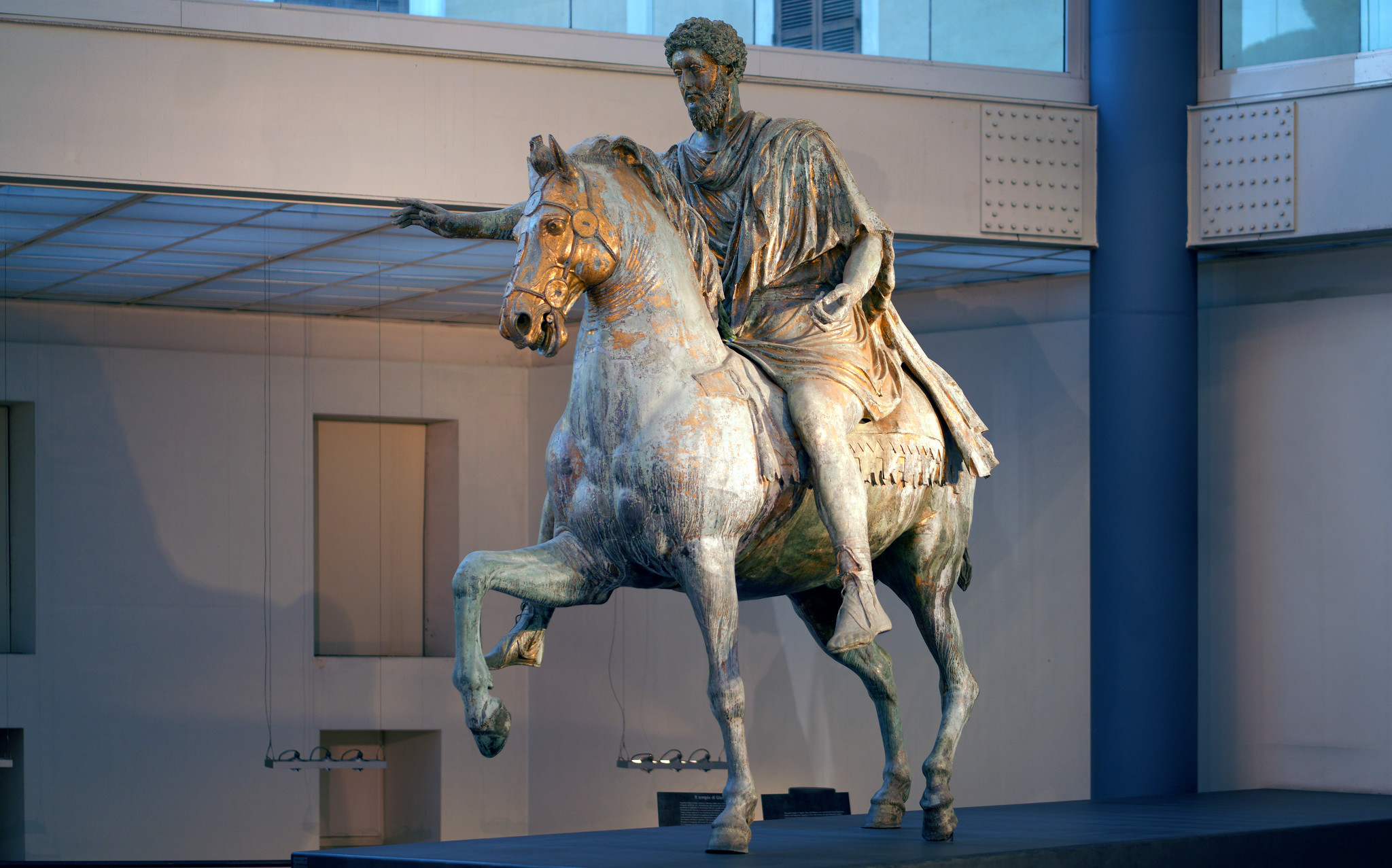
Equestrian Sculpture of Marcus Aurelius:
Donatello
gilded bronze
Donatello looked at what Romans were doing
first bronze statue made after 100 years
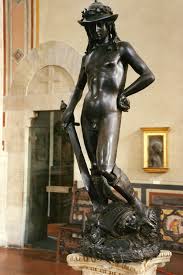
David:
Donatello
c. 1430 - 1460
Bronze
the bankers commissioned David
they saw themselves in his story
the hat represents a wealthy god, which points to the family
laurel leaves on head to show victory
symbol of Florence and Medichi family
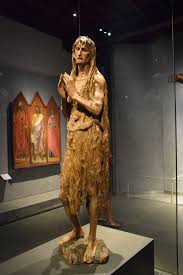
Mary Magdalene:
Donatello
Florence, Italy
c. 1452 -1455
Polychromed and gilded wood
Later work by Donatello turns away from classical beauty, grandeur
he worked with a multitude of materials
Raw emotion
recalls medieval ideals of piety
she was a prostitute
spends the next 30 years in repentance
What makes a great artist?
diversity in art platforms, styles, facial expressions
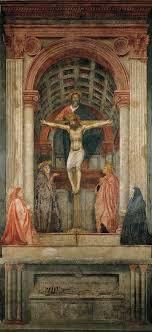
Trinity:
c.1425 - 28
Fresco
Santa Maria Novella, Florence Italy
illusion of depth
dove represents the holy spirit
Mary & John the Evangelist
Two donors of the church
“What you are, I once was, what I am, you will be”
memento mori: death symbol Skelton
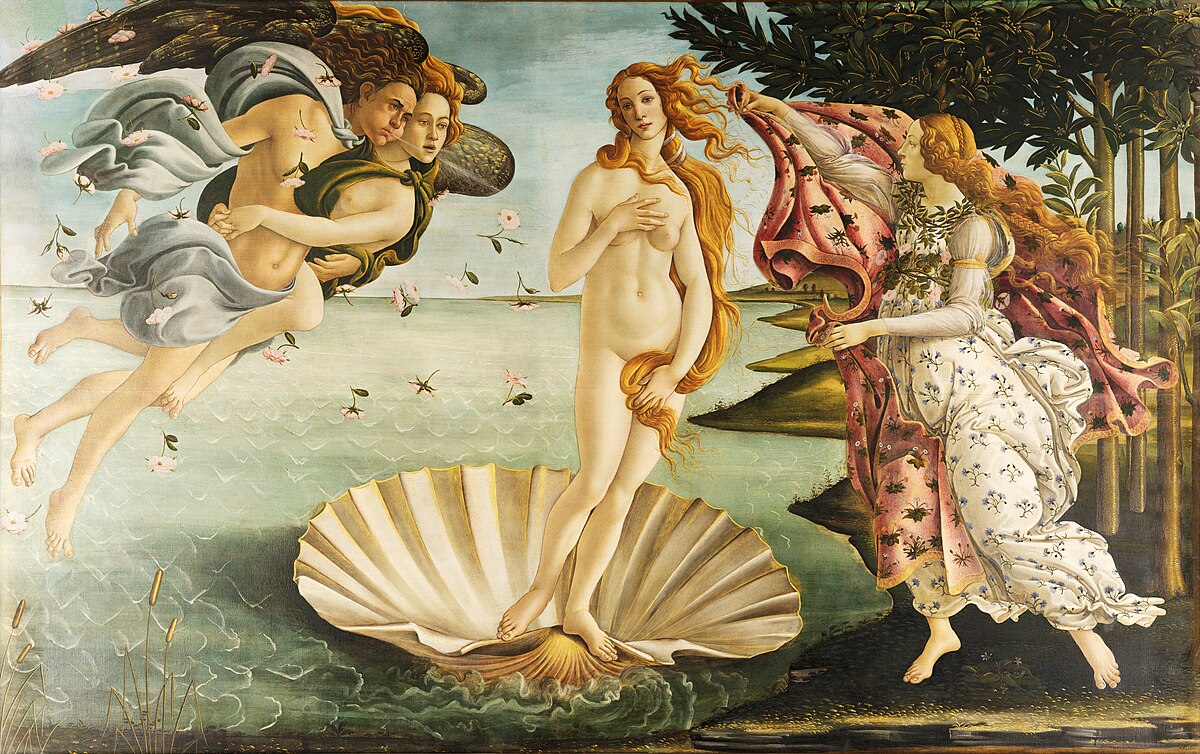
The Birth of Venus:
Botticelli
c. 1485
Tempera on canvas
Venus Pudica = Modest Vensus
Innovative use of the female nude
Allegory of innocence and truth of the soul
Christian mysticism- the ascent of the soul to God
Despite not being Christian, it has Christian allegories
gold highlights in the man/nymphs hair
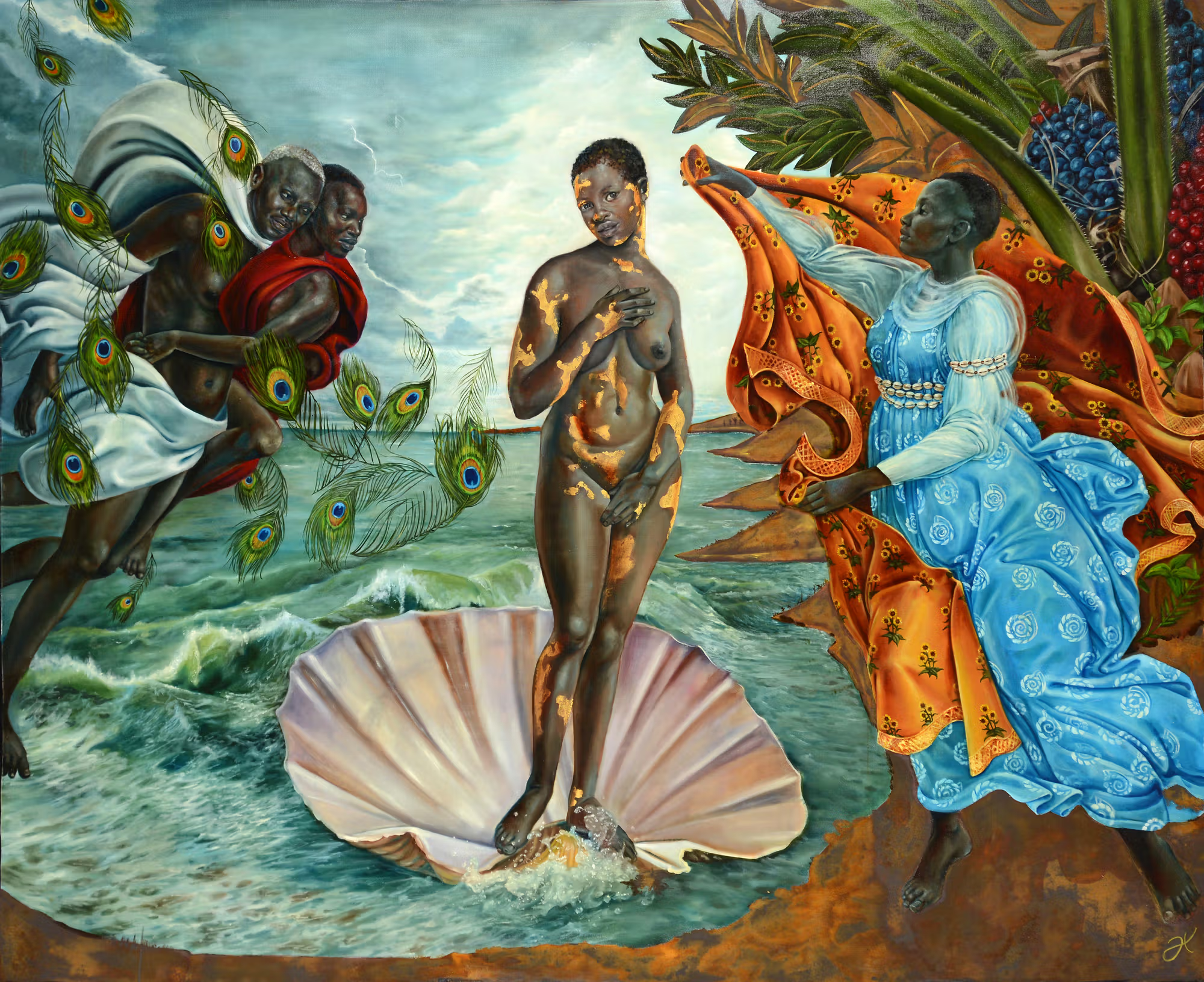
Birth of Oshun:
Harmonia Rosales
c. 2017
oil on linen
Celebrated in Brazil, Cuba, West Africa
goddis of love and vertiligo
different gender dynamic
goddess of the sea on the right
zues like figure on the left
artists wants ppl too look at other mythologies
boldness in color
lightning
background is more tropical, fruits cacti
peacock feathers
portions of her skin are covered in gold ot show vertiligo
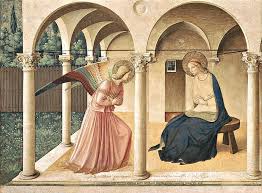
The Annunciation:
Fra Angelico
c. 1438 - 1447
Fresco
San Marco, Florence
loggia- a covered exterior gallery or corridor, supported by series of columns or arches
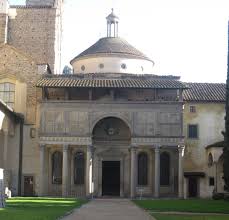
Pazzi Chapel at Santa Croce
Architects: Brunelleschi and Michealozzo
Florence, Italy
c. 1460s
All’antica detail: porch (loggia) that resembles triumphal arch
Meeting of pilasters at corners: struggle to reconcile mathematical proportions with ancient classical elements
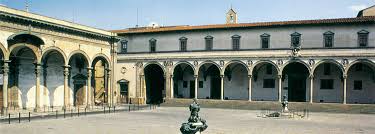
Ospedal Degli Innocenti (Hospital of the Innocent)
Filippo Brunelleschi
c. 1421
Florence, Italy
home for orphans
created by the artist who lost
goldsmith guild commissioned it
babies shown to show the purpose of the building
loggia: a covered exterior gallery or corridor, supported by series of columns or arches
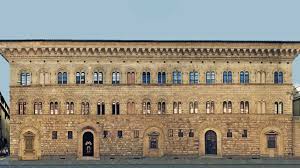
Palazzo Medici Riccardi
Michelozzo di Bartolommeo
Florence, Italy
c. 1445
commisioned by the Medici family
rough massonry
curved arches for windows
Roman inspired
cornice
even smoother surface
dressed masonry (smooth, finished)
rustication (rough, unfinished masontry)
Santa Maria Novella:
Leon Battista Alberti
Florence, Italy
c. 1456 - 1470
stained glass gothic
pattern similar to Islamic uses 2 or more colors
Greek/Roman temples: pendent at the top
columns/pillars